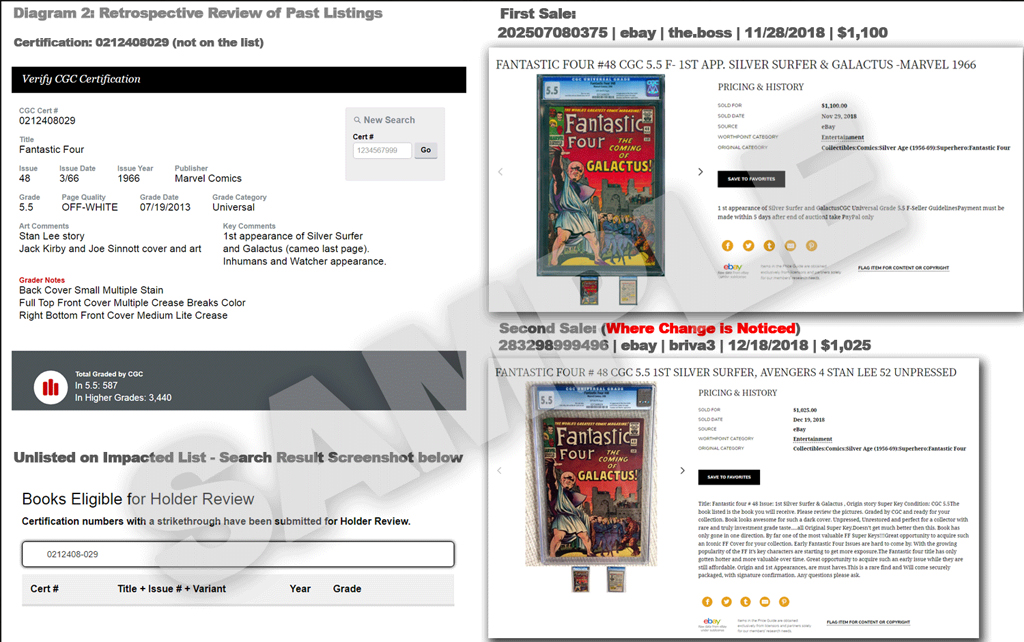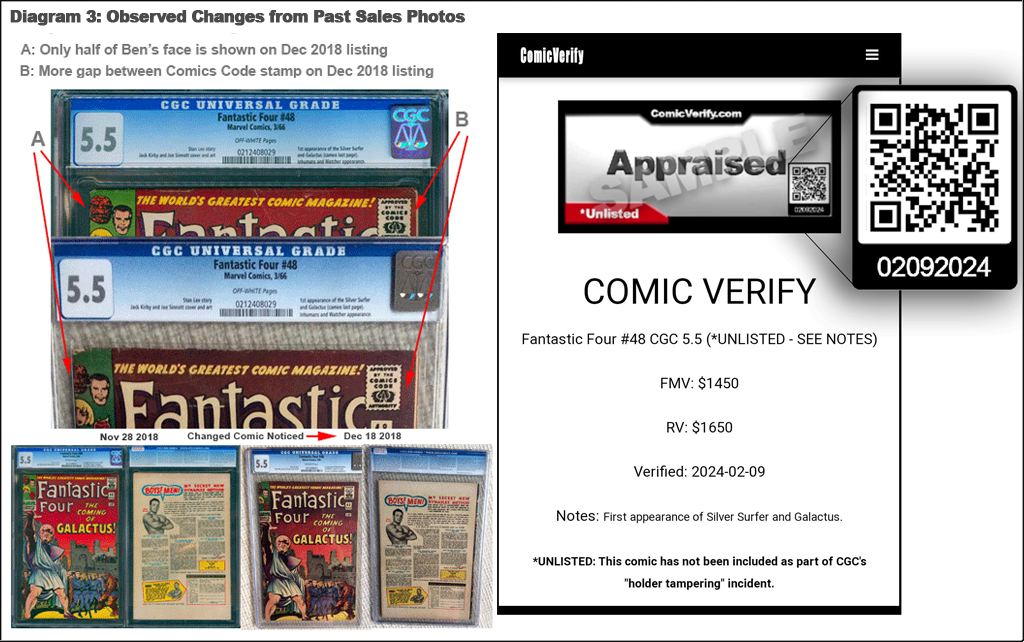

Toronto, ON Feb 9th, 2024 - We have arrived at a juncture in hobbying where the enterprising and transactional dynamics have rendered systems graders invented decades ago to counter fraud and tampering exposed and vulnerable.
Multiple events have occurred in the past few years demonstrating what these vulnerabilities look like. In trading cards, holder or 'flip' tampering has been a known issue for quite some time, and last year a putative class action in the Orange County courts alleged PSA was knowingly grading altered cards, and the lawsuit also claimed certain dealers were knowingly selling them. There was also a tampering incident in coin grading, where NGC issued a restraining order and preliminary injunction order in a coin tampering case.
In mid-December of 2023, I began reading about a form of tampering which had been discovered by collectors that pertained to comic book grading. Within the period between Dec 16-19, I was able to secure the entire sales history of multiple eBay accounts used by the alleged seller at the center of the "holder tampering incident." Within days of securing this dataset, I began posting examples of how this tampering looked, which included providing screenshots of the earliest known sale of that certification number, and tracking the changes of the book inside the holder throughout the graded comics entire known history of past sales, to determine when and who was comitting the tampering. Nearly 20 examples were shared on the CGC forums, beginning with Project Green to Blue, and then later, a compendium of links to other forms of tampering and swaps.
This was accomplished strictly through photo inspection of images from past sales.
More recently, this included an example of a Fantastic Four #48 CGC 5.5 not listed in CGC's "350 list", and where I provide an example of how such a tampered incident might be handled using a retrospective vs current comparables analysis, along with using replacement cost valuations to ensure victims are appropriately compensated.

At the very moment I saw the potential for prices to have been manipulated, I needed to do my own independent research on the matter. I take very seriously the codes of ethics I'm bound to as part of a society of appraisers, and this excercise became crucial to me beyond the purpose of understanding the ways market prices were being influenced by alleged tampering. It illuminates some of the very real activities that I've only up until this point believed were happening, and have theorized might be possible. Through the examples I've shown on the CGC forums, I've left it to the community to form their own opinions on what that tampering looks like, even if all we have at the moment are allegations of "holder tampering," that is until we see judgements from the pending lawsuits. And lawsuits is intentionally pluralized, because we would later discover that CGC had filed a lawsuit against two former employees (CGC v. Brandon and Ayana Terrazas), days before they filed their lawsuit against the seller accused of alleged tampering (Certified Guaranty Company, LLC v. ZANELLO et al).

Most self-appointed grading consists of consumer recognition of trusted third-party attestors. The original intent of graders was to safeguard protocols from a vulnerability previously thought to be impossible to address in peer-to-peer trading without some third-party grader acting as a verification checkpoint.
What has happened instead is the confluence of enterprising pursuits which have been used by both well meaning collectors as well as bad actors, with the latter choosing instead to use every available resource to subvert the models of authentication, pricing systems, and exposed their weaknesses to a degree where it has left outdated methods of safeguarding collectors very vulnerable.
Now, more than ever, collectors need to be aware of what this looks like in our everyday collecting pursuits, in order to circumnavigate the various methods of deception that have been used to resemble previously known and recongized systems of trust. In the context of how "appraising" an item can benefit collectors unsure about the authenticity of their comics or who are concerned they may have been impacted by this tampering incident, ComicVerify's two-step process requires the attestor to authenticate the item is genuine. From this, we are able to arrive at a determination of condition and henceforth it's value - this is conditional to it being real, and based on it's state of preservation at the time it is being inspected.
The most critical part of something being certified is that it should have the attestors name in the document. Without this, it is not a certified opinion. Collectors need to be aware of the difference between crafty marketing, and what they are actually receiving from graded items. Our goal through both ComicVerify and ToyVerify is to help collectors realize the most accurate market value for your comics or original art, toys, and that includes any/all comic related collectibles or displays.
I would welcome people to contact us through this website should they have any questions on our service offering.
